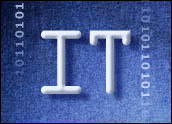
I dropped a small stone in a large pool last week, and the ripples are still spreading. In a separate post I wrote that IT is over. I was very careful to say that IT is over as a disruptive innovation and as an economic engine, but few understood what I meant, so I thought this would be a good chance to clear it all up.
- Strictly as an economic driver, IT has lost a lot of steam. Here are some talking points.
- Our devices are increasingly “Designed in California and assembled in China.”
- The software we use costs pennies on the App Store or tens of dollars per month per person.
- Social media is largely free.
- Wireless access is increasingly free. You can island hop from Starbucks to the airport and not miss the fact that in between you might have to pay something. Even if free goes away, you have a monthly subscription to service.
We are witnessing the end stages of commoditization of IT and the technology wave.
Out of the Driver’s Seat
True, you can make a longer list of IT and technology advances, but the point is that it all adds up to less of an impact on the economy than it once did. Moving from capital expenditure to operating expense is a big deal. Technology has become part of the equation, not the driver.
This is not a bad thing by a long shot if we see it in its true light. As an economic driver, IT has lost a great deal of its mojo. In this case, mojo can be equated with the ability to generate jobs that pay a middle-class wage or better and products that command top dollar. Devices are now produced in low-wage economies because as commodity products they can’t cost a lot, and if they can’t cost a lot, then you have to be able to sell a lot of them to keep a large corporation interested. But even with volume production and distribution, today’s prices don’t pay the first-world middle-class wage, and that is a good measure of what an economic driver is supposed to do.
Like devices, software is progressively commoditizing. In just the last 10 to 15 years, the applications that vendors like Siebel charged millions of dollars for have become on-demand commodities. Commodities don’t need service and support and can be sold through an indirect channel like an online store. Commodities have to be drop-dead easy to use and figure out even for the first-time user.
Take a look at what commoditization did for rock stars. Some, like Steven Tyler, have to moonlight on TV to make ends meet — OK, that was a joke but you can’t deny the corrosive effect of commoditization on content. It goes on and on, but my point is that this commoditization has stalled the jobs-creation engine.
Slipping Into the Background
It had to happen. Cars, petrochemicals (I’ve got one word for you: plastics. Remember that one?), electronics, steam power, railroads and a lot more were all once engines of the “new” economy until each became part of the fabric of the economy and the distinction between old and new vanished.
So, for example, the new-car market has largely become a replacement market, as we now have 750 cars for every 1,000 people in America. Cars are a growth market in China, where there are four cars per thousand population. The pre-recession production peak was about 16 million units, while in 2011 Detroit built 11.8 million units — about 1 million more than the year before. And demand is elastic, meaning that you can always get another year out of your ride if you don’t feel like committing to the expense for whatever reason, for instance a recession. That’s a commodity market.
Each old economic driver has been succeeded by a new economic driver that took the economy to a new level. The only thing new about the IT situation is us; we’ve never quite seen an economic driver stall, but here it is.
But just as we still use cars and we are heavily dependent on petrochemicals, we will be consumers of IT and its services and products for a long time into the future. IT may not be as profitable as it once was, and it may not generate the jobs it did, but we are completely dependent on it and on the way of life it makes possible through information sharing.
So, what’s next? It’s not an idle question; it’s the answer to employment and stagnation and the future prosperity of our country and planet. What’s most exciting about this situation is that, as I said at the outset, IT is not going away. It’s more important than ever. Whatever the next new, new thing is, it will require a strong dose of IT, social media, wireless, analytic and other technologies we’ve pioneered in the last few decades. But it won’t be IT, because IT is over.






















































